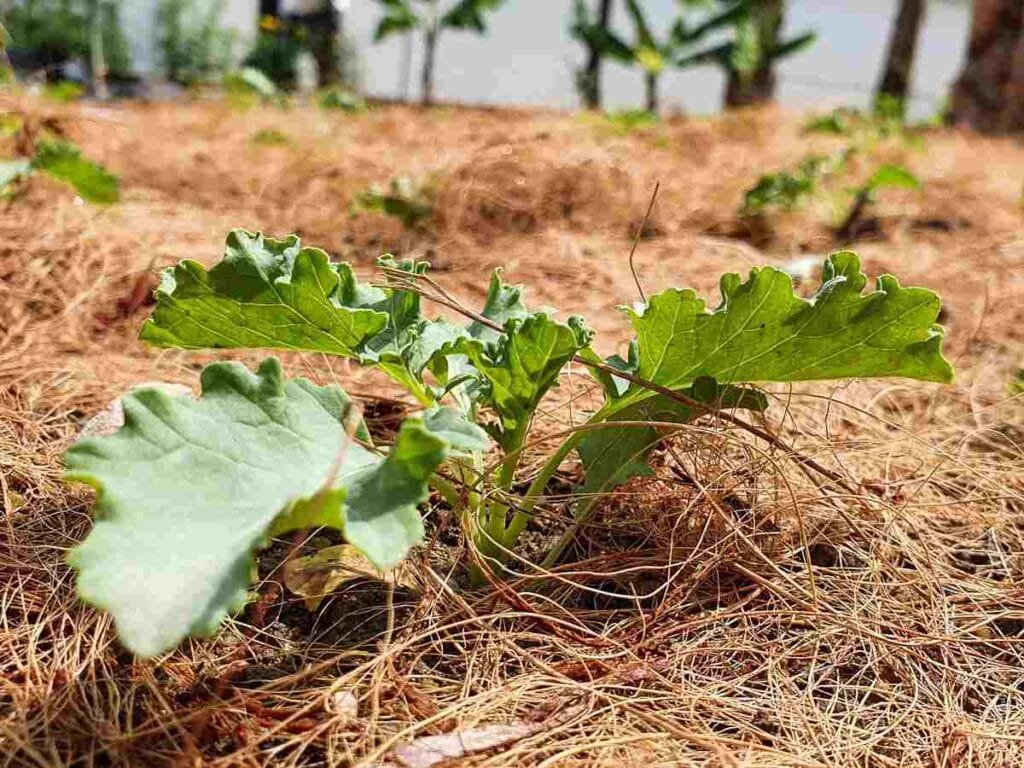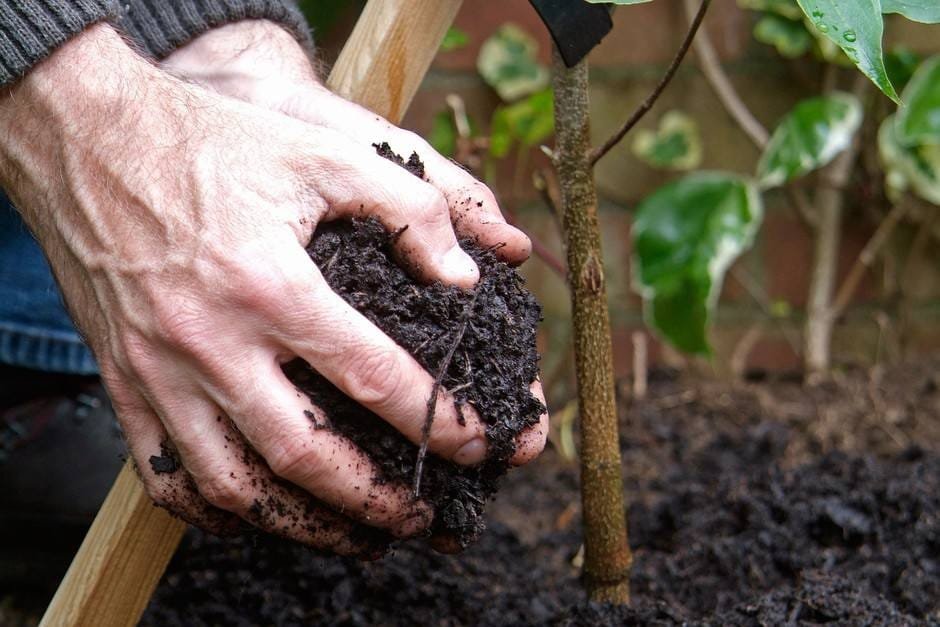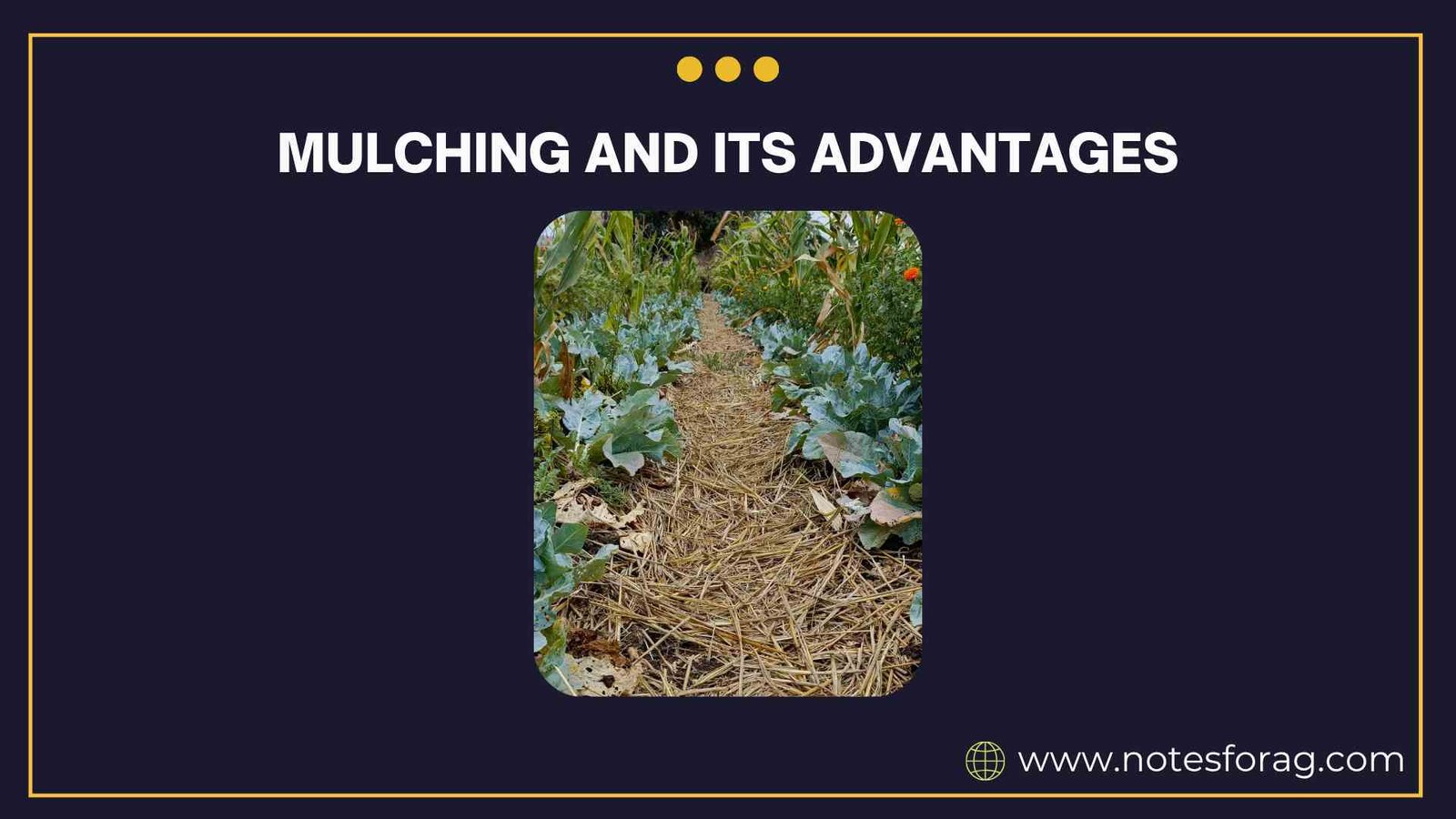Introduction

Mulching is an important agricultural practice used to conserve soil moisture, improve soil health, and enhance plant growth by covering the soil surface with organic or inorganic materials. It plays a vital role in crop productivity, particularly in water-scarce areas or where soil quality needs improvement. Mulching can also help control weeds, regulate soil temperature, and prevent erosion.
Summary of Mulching
- Mulching is a sustainable farming technique that involves covering the soil with organic or inorganic materials to conserve moisture, suppress weeds, and improve soil health.
- It offers numerous benefits such as enhancing fertility, regulating temperature, reducing erosion, and promoting beneficial soil organisms.
- By following best practices like choosing the right mulch and applying it properly, farmers and gardeners can significantly improve plant growth and yield.
Table of Contents
Definition of Mulching
Mulching refers to the process of covering the soil surface around plants with different types of materials to protect the soil and promote better plant health. It helps create a favorable environment for root development and plant growth.
Types of Mulching
1. Organic Mulching

Organic mulches are made from natural materials that decompose over time and add nutrients to the soil. Examples include straw, leaves, grass clippings, compost, bark, and sawdust. These types of mulches improve soil fertility as they break down.
2. Inorganic Mulching
Inorganic mulches are synthetic or non-degradable materials such as plastic sheets, gravel, stones, or landscape fabrics. These do not add nutrients to the soil but are effective in conserving moisture and controlling weeds.
Methods of Mulching
1. Sheet Mulching
Sheet mulching involves laying flat sheets of material like cardboard or plastic on the soil surface. These sheets block sunlight and prevent weed growth while conserving soil moisture.
2. Loose Mulching
Loose mulching involves spreading loose materials like straw, leaves, or compost around the base of plants. This method is easy to apply and helps improve soil structure over time.
3. Living Mulch
Living mulch includes low-growing ground cover plants that act as a protective layer. They reduce soil erosion and suppress weed growth while adding beauty to the landscape.
Materials Used for Mulching
1. Straw and Hay

Commonly used in vegetable gardens, straw and hay help retain soil moisture and prevent weed growth. They also add organic matter to the soil when decomposed.
2. Leaves and Grass Clippings
These are readily available in most home gardens and serve as excellent organic mulch. They decompose quickly and enrich the soil with nutrients.
3. Bark and Wood Chips
Often used in ornamental gardens and around trees, bark and wood chips provide a decorative appearance while retaining moisture and suppressing weeds.
4. Compost
Compost mulch provides nutrients and improves soil structure. It is particularly useful for vegetable beds and flower gardens.
5. Plastic Films
Plastic mulches are commonly used in commercial agriculture for crops like tomatoes and melons. They help in weed control, moisture conservation, and soil warming.
6. Landscape Fabrics
These are porous materials that allow water and air movement but block weeds. They are used in combination with other mulches like stones or bark.
Advantages of Mulching
1. Moisture Conservation
Mulching significantly reduces evaporation from the soil surface, helping plants access water for longer periods. This is especially beneficial during dry seasons.
2. Weed Suppression
A thick mulch layer prevents sunlight from reaching the soil, thereby stopping the growth of weeds. This reduces the need for manual or chemical weeding.
3. Soil Temperature Regulation
Mulch acts as an insulator, keeping the soil warmer in winter and cooler in summer. This creates a stable environment for plant roots.
4. Soil Structure Improvement
Organic mulches break down over time and improve soil texture, aeration, and nutrient availability.
5. Prevention of Soil Erosion
Mulch reduces the impact of heavy rainfall on the soil, preventing erosion and maintaining soil structure.
6. Enhanced Soil Fertility
Organic mulches decompose and release essential nutrients that support plant growth.
7. Reduction of Soil Compaction
Mulching helps reduce soil compaction by cushioning the impact of rainfall and foot traffic around plants.
8. Promotion of Beneficial Microorganisms
Mulch provides a habitat for soil organisms like earthworms and microbes that enhance soil health.
9. Aesthetic Appeal
In landscaping, mulching adds to the visual appeal of gardens and parks by providing a neat and uniform appearance.
10. Protection from Soil-Borne Diseases
Mulching creates a barrier between plant foliage and the soil, reducing the risk of disease transfer.
Challenges and Limitations of Mulching
1. Cost and Availability
Some mulch materials, especially synthetic ones, can be costly and not readily available to all farmers.
2. Pest and Rodent Issues
Certain organic mulches can attract pests or rodents, which might damage crops.
3. Improper Mulching Practices
Incorrect application, such as piling mulch too close to plant stems, can lead to rot or disease problems.
4. Maintenance Requirements
Mulch needs to be replenished periodically, especially organic types that decompose quickly.
5. Environmental Concerns
Use of plastic mulch raises issues related to disposal and environmental pollution.
Best Practices for Mulching
1. Selecting the Right Mulch
Choose mulch based on crop type, climate, and soil conditions. Organic mulch is better for improving soil health, while plastic mulch is ideal for moisture control.
2. Proper Mulch Thickness
Apply mulch in a 2–4 inch thick layer. Too little won’t provide benefits; too much may hinder air and water movement.
3. Timing of Mulch Application
Mulch should be applied when the soil is warm and moist. Early spring or post-planting is ideal.
4. Avoiding Mulch Piling
Keep mulch away from direct contact with plant stems to avoid stem rot and pest infestation.
5. Regular Monitoring
Check mulched areas for signs of pests, diseases, and mulch degradation, and replenish as needed.
Conclusion
Mulching stands as a highly beneficial and practical agricultural technique that offers a wide range of advantages to farmers, gardeners, and horticulturists alike. By simply covering the soil surface with suitable organic or inorganic materials, mulching serves as a powerful tool to protect and enhance the productivity of the soil. It plays a central role in conserving moisture, which is particularly valuable in arid and semi-arid regions where water scarcity is a major issue. Additionally, mulching significantly contributes to weed suppression by creating a physical barrier that limits the penetration of sunlight, thereby reducing the growth of unwanted plants.
Beyond moisture retention and weed control, mulching also helps in regulating soil temperature by insulating the root zone, keeping it warmer in cold conditions and cooler in hot weather. Organic mulches, in particular, improve soil fertility as they decompose and enrich the soil with vital nutrients. This not only enhances plant health and yield but also supports the activity of beneficial soil microorganisms that are essential for long-term soil sustainability. Furthermore, mulching reduces soil erosion caused by heavy rainfall, maintains soil structure, and prevents compaction caused by external forces like foot traffic or machinery.
Despite a few challenges such as initial costs, maintenance needs, and pest issues, the overall benefits of mulching far outweigh the limitations when practiced properly. Choosing the right type of mulch, applying it at the correct time and thickness, and maintaining it appropriately can lead to remarkable improvements in crop quality and quantity. In conclusion, mulching is not just a soil cover it is a smart, eco-friendly strategy that aligns with the goals of sustainable agriculture. When integrated effectively into farming systems, it can transform soil health and support resilient, high-yield crop production in both traditional and modern agricultural settings.
Frequently Asked Questions (FAQs)
What are the benefits of using mulch in a vegetable garden?
Mulching in a vegetable garden helps retain moisture, suppress weed growth, and improve soil fertility, leading to healthier and more productive plants.
Which is better for mulching: organic or plastic mulch?
Organic mulch improves soil over time by adding nutrients, while plastic mulch is better for moisture retention and weed control but does not enrich the soil.
When is the best time to apply mulch?
The best time to apply mulch is in early spring or right after planting, when the soil is warm and moist.
How thick should mulch be applied around plants?
A 2–4 inch layer of mulch is ideal; too thin won’t be effective, and too thick may block water and air.
Related Articles

